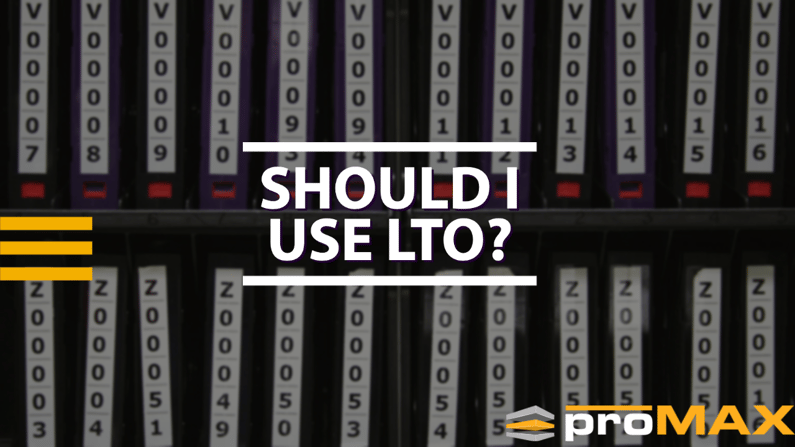Introduction
As a video editor, you collect a massive amount of data, including raw footage, final edits, and archives. You need a robust and reliable storage solution to manage your data efficiently, prevent data loss, and protect your workflows. Linear Tape-Open, or LTO, could be an ideal option. This blog post discusses the features, benefits, and drawbacks of LTO for video editors.
1. What is LTO?
LTO is a magnetic tape data storage technology developed by IBM, HP, and Quantum. The LTO Consortium manages and defines the LTO standard, including specifications for tape drives, tapes, and cartridges. LTO is widely used in data centers, archives, libraries, and enterprise-grade backups. LTO is characterized by its high capacity, long-term storage durability, and low total cost of ownership.
2. Benefits of LTO for video editing.
LTO’s primary advantage for video editing is that it provides a large, reliable, and low-cost storage solution. An LTO-8 cassette can store up to 30 TB of uncompressed data, and LTO-9 can provide 45 TB. LTO tapes can last for 30 years or more, depending on the storage conditions, and require minimal maintenance. Unlike hard drives or SSDs, LTO tapes are unaffected by magnetic fields, mechanical damage, or electrical surges. LTO tapes are also easy to transport, store offline, and verify their data integrity. Finally, LTO drives are backward compatible, so you can read old tapes and migrate to new tapes when needed.
3. Drawbacks of LTO for video editing
However, LTO has some limitations that may not fit all video editing workflows. For example, LTO tapes have a relatively slow data transfer rate compared to disks or RAIDs, and you need an LTO tape drive to read and write data. LTO tapes also require more time to retrieve data than disks, especially for large-scale archives. LTO tapes are also sensitive to heat, moisture, dust, and debris, so store them in a clean, cool, and dry environment. Additionally, LTO tapes rely on compression techniques to maximize their data capacity, which may affect the data quality for video files with complex codecs or metadata.
4. When to use LTO for video editing
LTO is suitable for video editors who must store large amounts of data for a long time, have predictable or infrequent access patterns, and prefer lower costs over faster performance. Some typical use cases for LTO in video editing include archiving completed projects, backing up less frequently accessed data, storing historical footage or media assets, and ensuring regulatory compliance. If you need fast and frequent access to your media or work with high-resolution or uncompressed video formats, you may prefer using solid-state drives or network-attached storage.
5. How to choose the right LTO solution
If you decide to adopt LTO as your storage solution, you need to consider several factors, such as the tape drives’ capacity, speed, and compatibility, the types of tapes and cartridges you need, the software and hardware interface you use, and the level of support and maintenance you require. You can purchase LTO products from various vendors, including IBM, HP, Quantum, Fujifilm, Dell, and HPE, and choose from different models, specifications, and warranties. You may also need specialized software or services to manage your LTO-based workflows, such as backup and recovery systems, indexing and searching tools, tape libraries, or cloud gateways.
Conclusion
In summary, LTO can be an excellent option for video editors who need to store a large amount of data for a long time, require reliable and cost-effective storage, and have less demanding access patterns. LTO offers high capacity, durability, backward compatibility, and low ownership costs, but it also has some drawbacks, such as slower performance, longer retrieval times, and sensitivity to environmental factors. If you decide to use LTO, make sure you choose the right solution for your needs, test your workflows thoroughly, and establish best practices for tape handling, storage, and verification.
If you want to dig deeper into this subject, view our blog on What is the Benefit of LTO to High-Volume Video Editors?


